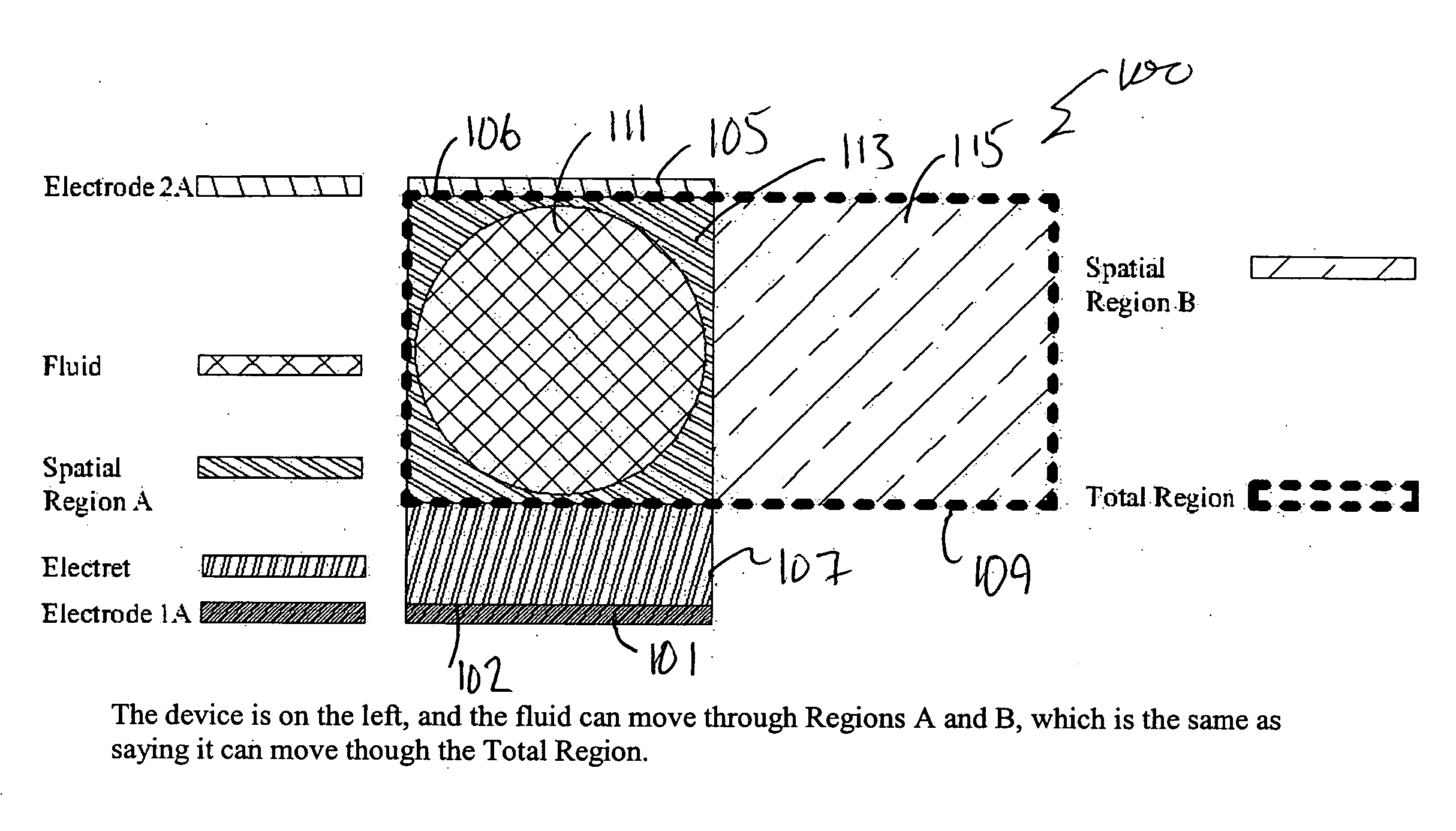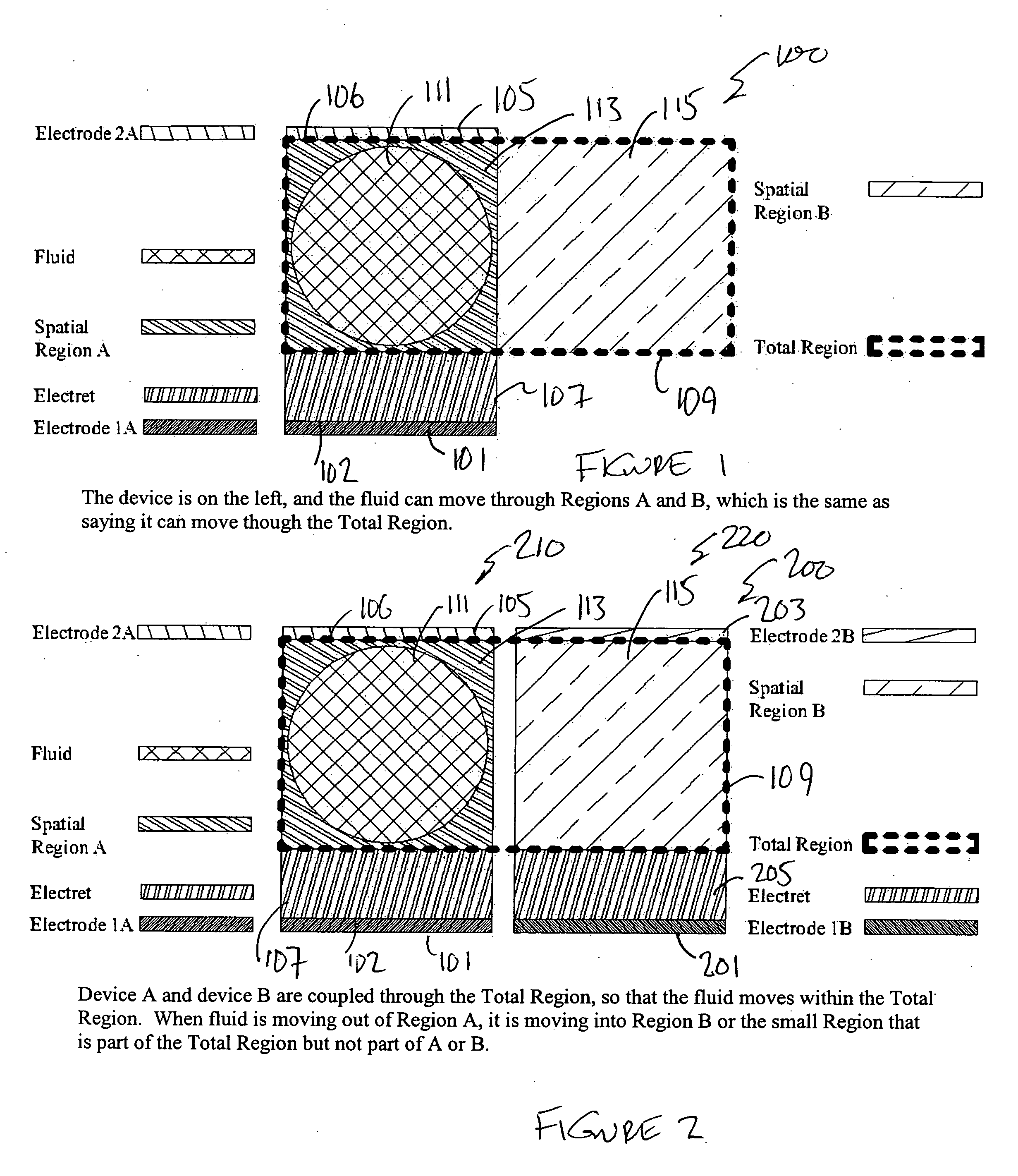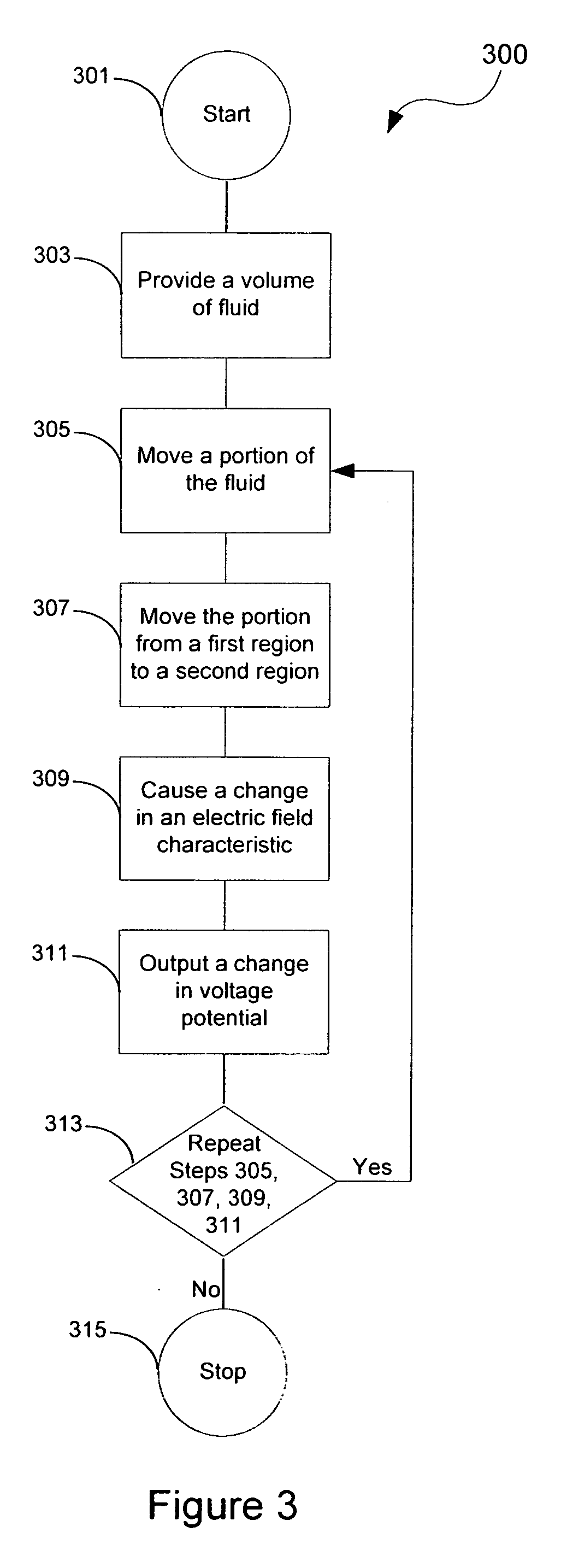Method and system using liquid dielectric for electrostatic power generation
a technology of electrostatic power generation and liquid dielectric, applied in the field of electric production, can solve the problems of insufficient power supply for conventional electromagnetic generators, ineffective power supply for applications, and limitations of electromagnetic generators, and achieve the effects of high reliability, high uniformity, and easy wear and tear
- Summary
- Abstract
- Description
- Claims
- Application Information
AI Technical Summary
Benefits of technology
Problems solved by technology
Method used
Image
Examples
Embodiment Construction
[0034] According to the present invention, techniques related to electrical production are provided More particularly, the invention provides a method and resulting device for fabricating an electret device having a liquid dielectric entity for generation of electrical power. Merely by way of example, the electret device has been fabricated using a patterning process including micromachining processes. But it would be recognized that other processes such as molding, casting, laser ablation, direct printing, etc. can also be used. Additionally, the liquid dielectric entity can be any movable liquid (or certain other fluids), solid entities, which may behave like a liquid, any combination of these, and the like.
[0035]FIG. 1 is a simplified diagram of an electret power generating device 100 according to an embodiment of the present invention. This diagram is merely an illustration, which should not unduly limit the scope of the claims herein. One of ordinary skill in the art would rec...
PUM
 Login to View More
Login to View More Abstract
Description
Claims
Application Information
 Login to View More
Login to View More - R&D
- Intellectual Property
- Life Sciences
- Materials
- Tech Scout
- Unparalleled Data Quality
- Higher Quality Content
- 60% Fewer Hallucinations
Browse by: Latest US Patents, China's latest patents, Technical Efficacy Thesaurus, Application Domain, Technology Topic, Popular Technical Reports.
© 2025 PatSnap. All rights reserved.Legal|Privacy policy|Modern Slavery Act Transparency Statement|Sitemap|About US| Contact US: help@patsnap.com



